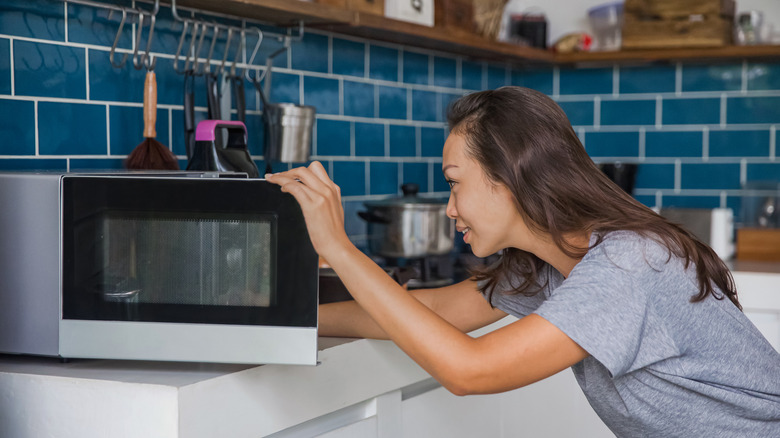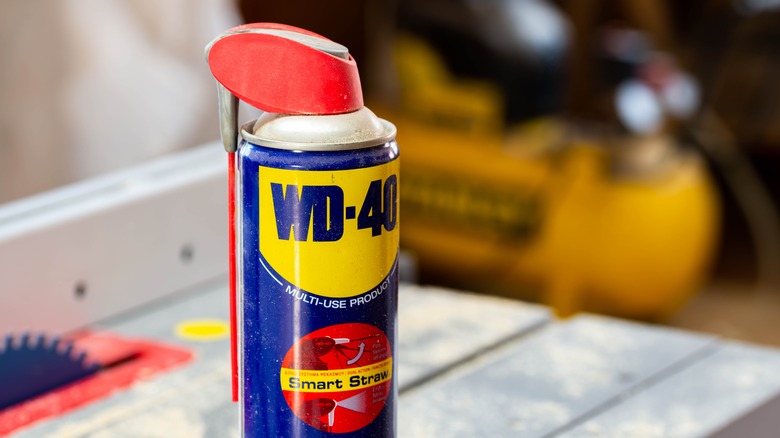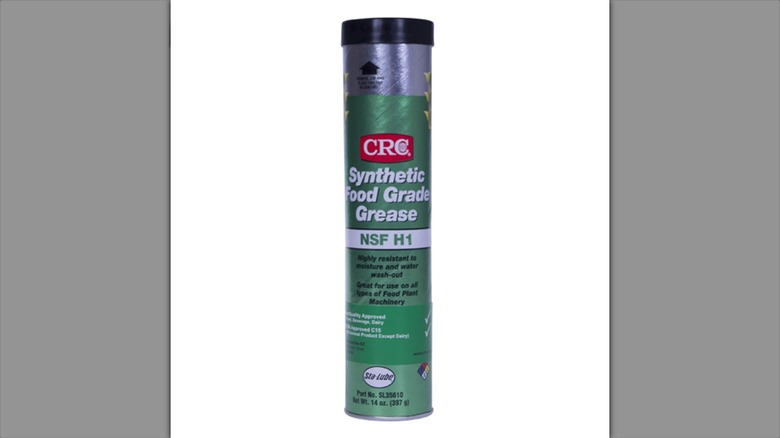Think Twice Before Using WD-40 On This Kitchen Appliance
We may receive a commission on purchases made from links.
WD-40 is one of those useful products that can fix almost any predicament you have. Not only can it help grease old bike gears, but it can also keep your garden tools splinter-free and remove stubborn grease stains from stoves. It's an all-purpose tool that can help fix things, protect them from future damage, and clean them when they're messy. So it only makes sense that you would grab it when your microwave door feels stuck or sounds creaky. However, you should think twice before spritzing its hinges with it. You could do more damage than good.
But we get the frustration. If you've had your microwave for a few years, it might be suffering a few quirks by now. Maybe its door squeaks when you open and close it, making it seem old and outdated. Or maybe the door swing isn't as smooth as it used to be, becoming stuck when you try to open it. While it might be tempting to grab WD-40 to fix it, finding a safer alternative is best.
Why you shouldn't use WD-40 on microwave doors
You shouldn't use WD-40 on microwave doors for two reasons: it's flammable and unsafe for consumption. If you read the back of the bottle, you will see that the product is highly flammable and should not be near any heat. While a microwave doesn't use fire to warm up your food, it still creates high levels of heat that could potentially ignite the liquid. Its flashpoint is around 117 degrees Fahrenheit, and microwaves can heat up to 212 degrees Fahrenheit. This can put you in danger, whether that means the lubricant will begin to smoke or possibly catch on fire.
WD-40 is also unsafe for consumption. As you can imagine, it's not made with natural ingredients. Instead, according to WD-40, its unique blend of chemicals can cause respiratory issues if inhaled and can also cause dizziness, headaches, and nausea. As you can imagine, you don't want that accidentally dripping onto your food, which is why you shouldn't use it in the microwave.
What you should use instead
Since you can't use WD-40 on its door hinges, are you doomed to hear squeaks whenever you open or close the microwave door? Not quite. There is one product you can use to fix the issue: a non-flammable grease lubricant spray. Just make sure it's not aerosol, or else it can catch on fire.
If you're unsure which grease spray is safe, look no further than Sta-Lube Synthetic Food Grade Grease from Amazon. It's specifically designed to be used in areas with food or drink, such as breweries, dairies, and meat processing plants. And if it's safe enough for them, it's safe enough for your kitchen. Not only is it ok to use around food, but it can also safely reach up to 450 degrees Fahrenheit without smoking or igniting, which is double what a microwave can reach. This way, you know you won't have surprise fires on your hands.


